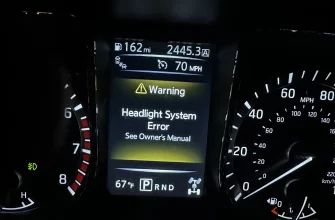If you drive a Nissan, you’ve likely heard the whispers, perhaps even experienced it firsthand: the concerns surrounding the reliability of Nissan’s Continuously Variable Transmissions (CVTs). For many owners, the question isn’t if the CVT will have problems, but when. Understanding what causes Nissan CVT transmission failure is the first step to recognizing potential issues and hopefully taking steps to prolong your transmission’s life or address problems early.
Unlike traditional automatic transmissions that use gears, a CVT uses a system of pulleys and a belt or chain to provide an infinite range of gear ratios. This design is intended to offer smoother acceleration and better fuel efficiency. However, certain generations of Nissan’s CVTs (largely supplied by Jatco) have gained a reputation for premature wear and failure, leading to significant frustration and costly repairs for owners. This is why you see terms like “CVT transmission Nissan problems” so frequently discussed.
Let’s delve into why these transmissions tend to fail and the warning signs to watch out for.
The Root Causes: Why Nissan CVTs Can Fail
The primary reasons behind what causes Nissan CVT transmission failure often boil down to a few key factors related to their design and how they handle stress:
- Heat is the Enemy: CVTs generate a significant amount of heat due to the friction between the belt/chain and the pulleys. Excessive heat breaks down the transmission fluid quickly. Driving habits like frequent hard acceleration, stop-and-go traffic, towing (especially beyond the vehicle’s capacity), or driving in hot climates put extra thermal stress on the transmission. Overheating is a major contributor to premature wear.
- Fluid Degradation and Lack of Maintenance: CVT fluid is highly specialized. It provides lubrication but also facilitates the necessary friction between the belt and pulleys for power transfer. Over time and with heat, this fluid breaks down, losing its friction properties and ability to lubricate effectively. Metal shavings from normal wear circulate in the degrading fluid, accelerating wear on components. Lack of regular CVT fluid changes according to or more frequently than Nissan’s recommended schedule (especially under severe driving conditions) is a critical factor in failure.
- Belt and Pulley Wear: The constant sliding contact between the metal belt/chain and the conical pulleys causes wear over time. This wear can lead to slipping, improper ratio changes, and eventually complete failure.
- Design Limitations in Certain Generations: Some specific generations of Nissan’s CVTs were criticized for design flaws that made them less durable, particularly under stress or higher mileage, contributing to the widespread CVT transmission Nissan problems.
- Solenoid or Valve Body Issues: The transmission’s operation is controlled by hydraulic pressure regulated by solenoids and the valve body. Malfunctions here can lead to incorrect pressure, slipping, or erratic behavior, accelerating wear.
Nissan CVT Transmission Failure Symptoms: What to Watch For
Recognizing the warning signs early can potentially save you from being stranded or facing a more expensive repair down the line. Pay attention to these Nissan CVT transmission failure symptoms:
- Shuddering or Shaking: A common symptom is a vibration or Nissan altima vibration at 2000 rpm (or similar RPM ranges in other models) feeling like driving over a rumble strip, especially during acceleration or at a steady speed. This is often due to torque converter shudder or issues with the belt/pulley system slipping.
- Whining or Grinding Noises: Unusual noises coming from the transmission area can indicate internal wear or pump issues. Whining often gets louder with acceleration.
- Hesitation or Delayed Acceleration: When you press the gas pedal, the car might hesitate before accelerating, or acceleration feels sluggish.
- RPM Flaring: The engine RPMs might suddenly jump very high (flare) without a corresponding increase in vehicle speed, indicating the belt is slipping on the pulleys.
- Slipping Sensation: The car might feel like it’s slipping or struggling to transfer power, especially under load.
- Check Engine Light: Transmission issues often trigger the Check Engine light on your dashboard, usually accompanied by specific transmission-related diagnostic trouble codes (DTCs).
- Limp Mode: The transmission computer might put the car into “limp mode” to prevent further damage, severely limiting acceleration and speed.
- Complete Loss of Power: In the most severe cases, the transmission can fail completely, leaving you unable to move the vehicle.
“My Nissan Rogue started making a loud whining noise and would hesitate when I accelerated. David, 49, it felt like the transmission was slipping. The mechanic confirmed it was a common CVT issue for that year and needed replacement. It matched the typical Nissan CVT transmission failure symptoms I read about online.” – A Rogue owner experiencing CVT failure symptoms
What Nissan Cars Have CVT Transmission Problems?
Unfortunately, the issues with certain generations of Nissan’s CVTs affected a wide range of models that utilized them. Some of the Nissan cars commonly associated with CVT transmission Nissan problems include:
- Nissan Altima (particularly 2007-2013 and some later models) – This aligns with owners experiencing Nissan altima vibration at 2000 rpm.
- Nissan Rogue (especially 2008-2016)
- Nissan Sentra (certain years, particularly 2013-2019) – Related to general Nissan problems like Why does my Nissan Sentra keep beeping.
- Nissan Murano
- Nissan Versa and Versa Note
- Nissan Pathfinder (2013 and later)
- Nissan Juke
- Nissan Maxima (later models)
It’s important to note that not every CVT in these models will fail, and newer generations have seen improvements, but specific years and models had higher reported failure rates.
Nissan’s Response: Lawsuits and Warranty Extensions
Due to the widespread nature of these issues, Nissan has faced significant scrutiny and legal action.
- Nissan CVT Transmission Class Action Lawsuit: Several class action lawsuits have been filed against Nissan regarding the CVT problems. Settlements in these lawsuits have often resulted in extended warranty coverage for the CVT transmission on specific affected models and years (e.g., extending coverage to 84 months/84,000 miles or even 10 years/120,000 miles in some cases). These settlements don’t typically involve a traditional Nissan CVT transmission recall (which is for safety defects) but rather address durability concerns through warranty enhancements.
- Technical Service Bulletins (TSBs): Nissan has also issued numerous TSBs providing dealerships with procedures for diagnosing and repairing specific CVT issues, sometimes including updated software or revised parts.
If you own an affected Nissan model and are experiencing CVT problems, check if your vehicle is covered under any extended warranty programs resulting from a Nissan CVT transmission class action lawsuit settlement. You can do this by contacting a Nissan dealership with your VIN or checking Nissan’s owner website for active campaigns.
How to Avoid Nissan CVT Problems (Tips for Longevity)
While the design contributed to issues in some units, proper maintenance and driving habits can significantly impact your Nissan CVT’s lifespan. Here’s How to avoid Nissan CVT problems or at least minimize their likelihood:
- Change Your CVT Fluid Regularly: This is the single most important thing you can do. Follow the maintenance schedule in your owner’s manual, but consider changing it even more frequently (e.g., every 30,000-60,000 miles, especially if you drive in hot climates, stop-and-go traffic, or tow). Use ONLY genuine Nissan NS-2 or NS-3 CVT fluid as specified for your vehicle. Do NOT use universal or aftermarket fluids unless specifically approved by Nissan.
- Avoid Frequent Hard Acceleration: Smooth, gradual acceleration puts less stress on the belt and pulleys.
- Avoid Heavy Towing or Overloading: Stay within your vehicle’s towing and payload limits.
- Consider an External Transmission Cooler: If you live in a hot climate or frequently tow, adding an external cooler can help keep fluid temperatures down.
- Address Symptoms Early: If you notice any shuddering, noise, or hesitation, have the transmission inspected by a qualified mechanic immediately. Don’t wait for it to get worse.
- Keep the Cooling System Healthy: Ensure your engine’s cooling system is functioning correctly, as engine heat can transfer to the transmission.

Frequently Asked Questions (FAQ)
Q: What causes nissan cvt transmission failure most often?
A: The most common causes are heat damage to the fluid and components, and premature wear of the belt/pulleys, often exacerbated by inadequate maintenance (specifically, not changing the fluid often enough).
Q: What are the first Nissan CVT transmission failure symptoms I might notice?
A: Early symptoms often include shuddering or vibration during acceleration (like Nissan altima vibration at 2000 rpm), hesitation, or subtle whining noises from the transmission area.
Q: Are all Nissan cars with CVTs prone to problems?
A: Not necessarily all, but specific models and model years had higher rates of reported issues. Newer generations of Nissan CVTs have generally shown improved reliability, but proper maintenance remains crucial.
Q: Is there a Nissan CVT transmission recall?
A: While there wasn’t a widespread safety recall labeled as such for the durability issues, Nissan has implemented Warranty Extension Programs and Special Service Programs (SSPs) for many affected models and years, often resulting from a Nissan CVT transmission class action lawsuit settlement. These extend the warranty period for the transmission.
Q: How to avoid Nissan CVT problems?
A: The best ways include following or exceeding the recommended CVT fluid change intervals using genuine Nissan fluid, avoiding frequent hard acceleration and heavy towing, and addressing any unusual symptoms promptly.
Conclusion
The concerns around what causes Nissan CVT transmission failure are valid for owners of many past and present Nissan models. Issues stemming from heat, fluid degradation, and component wear are the primary culprits, often leading to recognizable failure symptoms like shuddering, whining, and hesitation. While specific Nissan CVT transmission class action lawsuit and warranty extensions, proper maintenance is key for any CVT’s longevity. By understanding the causes, recognizing the symptoms early, and diligently following maintenance recommendations on this problem, you can help extend the life of your Nissan’s transmission and potentially avoid costly repairs down the road.







